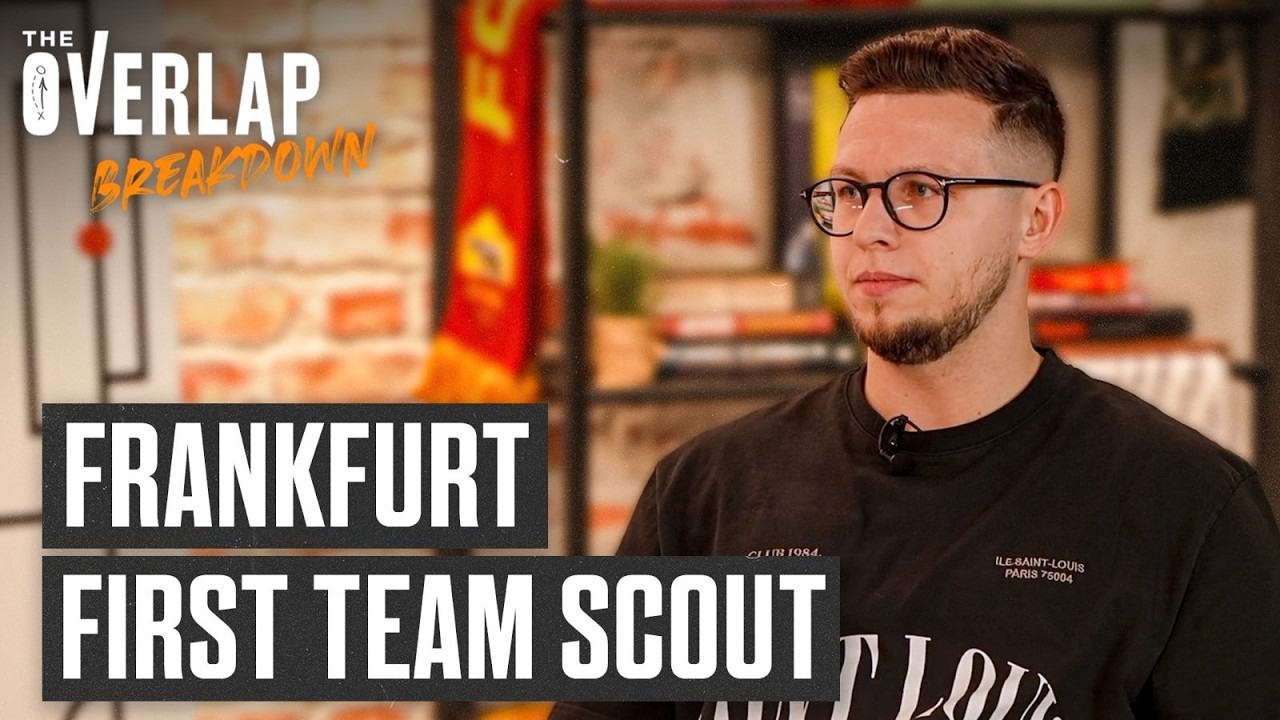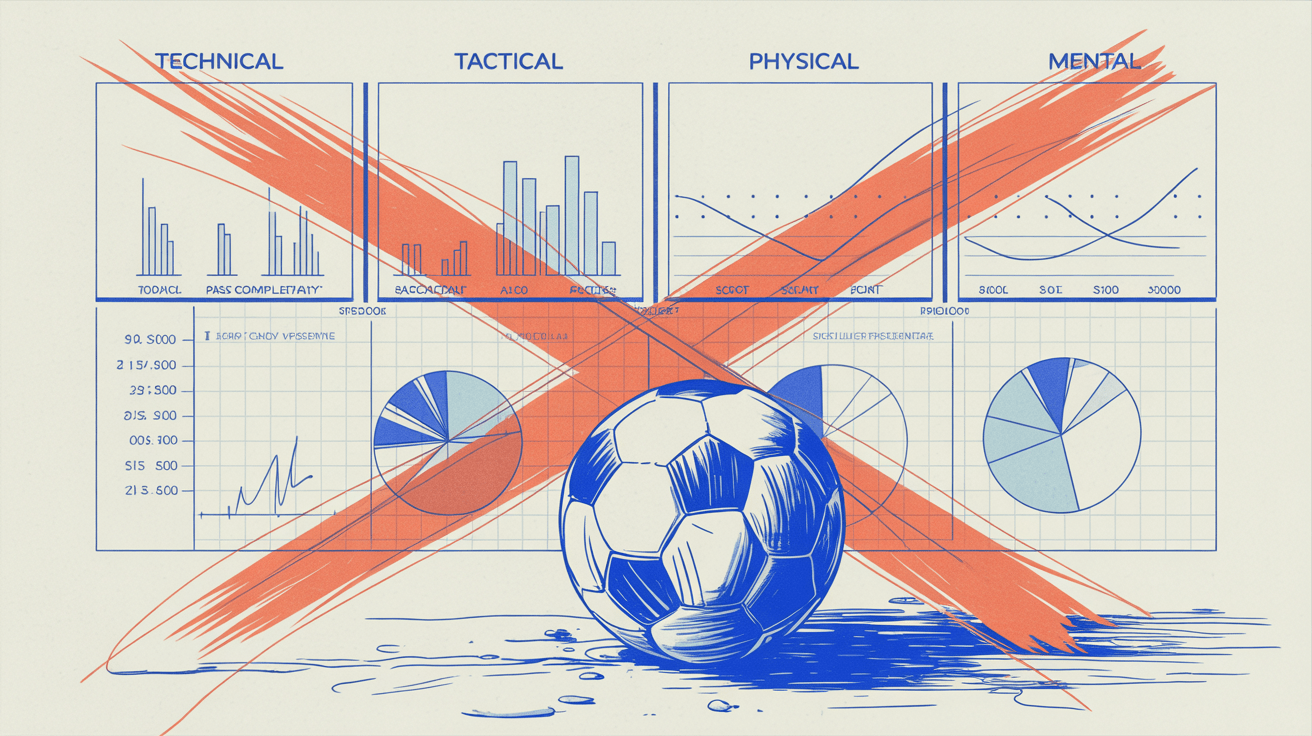Valuable lessons from Eintracht Frankfurt’s Tom Reynolds
Football scouting has transformed dramatically over the years, with data analytics and artificial intelligence (AI) playing increasingly central roles. However, the experience of top scouts like Tom Reynolds, first-team scout for Eintracht Frankfurt, reminds us that successful scouting is about more than just numbers—it’s about combining data analytics, live observations, and video scouting to form a complete picture. Recently, Reynolds was interviewed by the popular The Overlap Breakdown YouTube channel, where he talked for more than an hour with host Harrison about his experience, insights, way of work, and secrets, offering valuable lessons for scouts at every level.
Summary: the interview in a nutshell
Insights from Bundesliga Top Scout Tom Reynolds at Eintracht Frankfurt reveal key information and strategies:
- How to scout for a Bundesliga top club
- Eintracht Frankfurt’s recruitment model and process
- The lessons learned from working at Lokomotiv Moscow with Ralf Rangnick
- The impact of AI on football scouting
- The role of video scouting
A career in football scouting
Tom Reynolds’ career journey provides a fascinating look into the evolving landscape of football. Starting as an academy analyst at Reading, he worked as a sports scientist at Charlton Athletic before spending a decade at Opta, a leading data analytics company. He later joined Ralf Rangnick at Lokomotiv Moscow to establish a data department and now serves as a first-team scout at Eintracht Frankfurt. His career highlights the balance between embracing new technologies and retaining traditional scouting practices.
Learning from Ralf Rangnick
While working with Ralf Rangnick at Lokomotiv Moscow, Reynolds offered a modern football management and recruitment masterclass. Rangnick, renowned for his forward-thinking approach and systematic philosophy, has been a trailblazer in football scouting and team-building. Reynolds describes Rangnick as a visionary who believes in the early adoption of innovative methods, including:
- Collaborative evaluation: Rangnick’s recruitment process involves bringing together scouts, data analysts, and coaches to form a comprehensive player picture. Every perspective is valued, ensuring decisions are not solely based on data or subjective opinions.
- Building systems, not just teams: Rangnick emphasizes creating structures that outlast individual tenures. This approach at Lokomotiv Moscow included setting up a data department designed to function independently and sustainably.
- Player development philosophy: He prioritizes recruiting players with clear potential and believes in nurturing their growth through targeted coaching. This ensures that recruitment aligns with long-term club strategies and commercial goals.
Rangnick’s influence extends beyond Moscow, with his methods inspiring clubs like Red Bull’s football network. His emphasis on integrating data, video scouting, and live observations mirrors the holistic approaches seen in modern football’s most successful organizations.
Eintracht Frankfurt’s Scouting Philosophy
At Frankfurt, the recruitment strategy revolves around identifying young talent (average recruitment age ~21.7 years) that fits the club’s distinct tactical style. Reynolds explains that the team’s success lies in:
- Understanding tactical needs: Frankfurt often relies on inviting pressure and capitalizing on transitions. This requires athletic forwards with excellent decision-making and adaptability.
- Integrating tools: Data, live scouting, and video analysis work together to evaluate potential recruits comprehensively.
- Planning for the future: The club’s approach ensures that every new signing fits seamlessly into their system while possessing the potential for growth and resale value.
Insights into data and AI in scouting
Reynolds shares his experience working with AI and data models, noting their transformative impact on scouting. Tools like expected goals (xG), expected assists (xA), and passing networks offer invaluable insights, but they must be paired with human judgment:
- Context matters: Data can highlight trends and identify promising players, but understanding the context—such as tactical fit and individual creativity—requires a scout’s eye.
- Interpreting AI outputs: Models like expected receivers or passing likelihood provide predictions, but video scouting adds clarity by revealing nuances such as body positioning or off-the-ball movement.
The role of video scouting
Video scouting remains a cornerstone of modern recruitment, complementing data analysis by providing a qualitative perspective. According to Reynolds:
- Filling the gaps: Video allows scouts to assess aspects of a player’s game that data cannot capture, such as decision-making under pressure or adaptability in different scenarios.
- Cross-referencing data: Scouts use video to validate insights derived from data, ensuring a complete understanding of a player’s strengths and weaknesses.
- Building depth: Reviewing multiple matches on video helps scouts form a well-rounded view of a player’s consistency and potential.
Overcoming challenges in scouting
Despite advancements in technology, scouting remains a challenging profession. Reynolds highlights the difficulties of predicting a player’s future potential and ensuring they adapt to new environments. Key considerations include:
- Cultural integration: Assessing how players from different regions, such as South America, might settle into European leagues like the Bundesliga.
- Balancing tools: Combining video analysis, live observations, and data insights to reduce the risks associated with player recruitment.
Lessons for aspiring scouts
Reynolds’ experiences offer valuable advice for those looking to enter the field:
- Master tactical analysis: Learn to evaluate how players fit into specific systems and styles of play.
- Use all available tools: Balance data analytics, video scouting, and live observations for comprehensive assessments.
- Stay organized: Effective planning and time management are crucial for covering multiple matches and maintaining accurate records.
The future of football scouting
Tom Reynolds’ insights into football scouting underscore the importance of combining traditional methods with modern tools. At Eintracht Frankfurt, integrating data, video, and live scouting has proven to be a recipe for success. His time with Ralf Rangnick also highlights the value of systematic thinking and collaborative evaluation in shaping modern scouting practices. Aspiring scouts can learn from his approach, embracing technological innovations and the timeless art of understanding the game. In a rapidly evolving field, the ability to adapt and combine these elements will define the next generation of football scouts.



